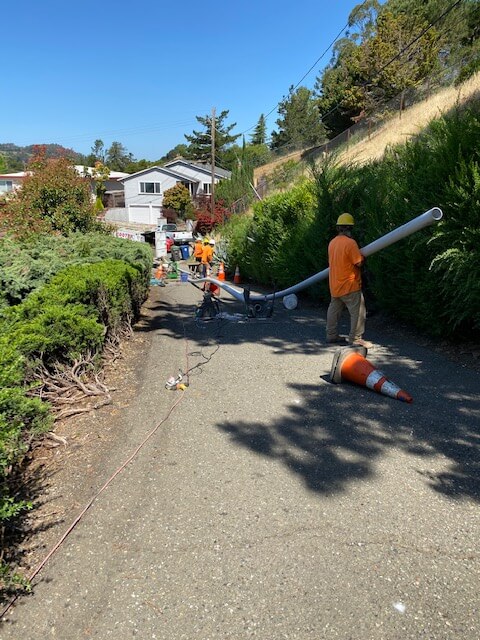Your local plumber offers more than rooter service. If you have a larger problem than a single instance of a clogged toilet, your plumber can take a look at your entire plumbing system, including your sewer line. Your plumber can insert a video camera down your pipes to find issues, such as sagging pipes or a broken sewer line. When your sewer line is broken, your plumber can repair it in the traditional way or use a trenchless method.
Traditional Sewer Replacement with Excavation
In the past, the only way to repair a broken sewer line was by excavating the entire damaged section. The damaged piping was removed then replaced with a new section of pipe. Traditional replacement is still used, but since the acceptance of trenchless sewer replacement in the plumbing industry, it’s been used less frequently. Traditional replacement can be expensive and uproot landscapes, gardens, and buildings, so plumbers try to avoid it.
Trenchless Sewer Replacement
The least invasive repair option is trenchless sewer repair & replacement. The first trenchless technology was created in the 1970s, when British agricultural engineer Eric Woods developed the pipe replacement technique cured-in-place piping (CIPP). He developed this method when he needed to repair a damaged air duct above his mushroom bed, as he couldn’t remove the pipe. Instead, he pulled a plastic-wrapped felt tube containing resin through the damaged pipe, then inflated it to fill the pipe. This hardened into a new layer, fixing the pipe without major construction.
In addition to CIPP, your sewer line replacement contractor will consider two other methods. Here’s what you need to know about those trenchless sewer replacement methods:
Sliplining
Sliplining uses the broken pipe as a pathway for the new pipe. The new pipe must be narrower than the broken pipe, so it can fit inside and be grouted into place. This turns the old pipe into an outer shell that is slightly larger than the new pipe, so if you want to upsize your new pipe, you’ll want the next method: pipe bursting.
Pipe bursting
Pipe bursting uses a bursting tool that pulls a new pipe along the broken pipe, dismantling the broken pipe open as the new pipe replaces it. The new pipe can be of any size, so this is the best trenchless option if you want a new pipe of a similar or larger diameter.
When you’ll need traditional sewer replacement
Trenchless sewer replacement requires an intact old pipe to work. If the old pipe is too damaged, misshapen with a pipe belly, or sags, you’ll need traditional replacement. Additionally, if your old pipe is close to the surface and not underneath gardens or buildings, it could be cost effective to use traditional replacement because it’s easy to dig a narrow trench.
When you can use trenchless sewer replacement
The fundamental prerequisite for trenchless sewer replacement is the old pipe being intact enough to act as a feeder tube. In most cases, if the old pipe can be a feeder tube, you can use trenchless repair.
Ehret Co. Plumbing & Heating — Family-owned rooter service
To determine the best way to fix your broken sewer line, contact Ehret. Co Plumbing & Heating through our online contact form or call us at 510-528-4292. We’ll inspect your sewer line and talk you through the different repair options available.

